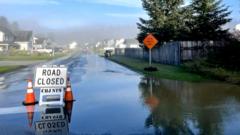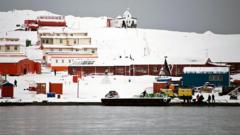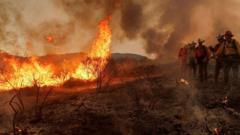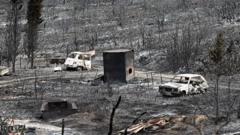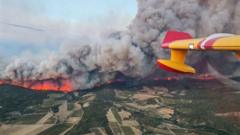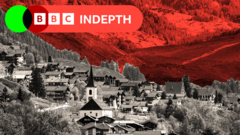The world's glaciers are facing unprecedented melting rates, raising concerns over freshwater supplies and sea-level rise.
**Melting Glaciers: A Terrifying Rate of Decline Revealed**

**Melting Glaciers: A Terrifying Rate of Decline Revealed**
Research indicates glaciers are vanishing faster than ever as climate change accelerates this alarming trend.
The world's glaciers, known for their critical role as vital freshwater resources, are melting at an alarming rate, according to a comprehensive new study published in the journal Nature. Scientists have noted that since 2000, glaciers lose an estimated 270 billion tonnes of ice annually, a significant contribution to rising sea levels. This loss has accelerated with over 6,500 billion tonnes of ice, or 5% of global glacier volume, disappearing since the turn of the century.
The Aletsch Glacier, the largest glacier in the European Alps, exemplifies this trend, having retreated approximately 3.2 km (2 miles) since 1900, with more than 1 km of this retreat occurring since 2000. The study, which consolidates over 230 regional estimates from 35 international teams, reinforces the seriousness of glacier decline. It underscores not just the rate of melting but also the implications for people who depend on glaciers for fresh water and for coastal cities facing flooding threats due to rising sea levels.
Michael Zemp, the director of the World Glacier Monitoring Service, pointed out that the annual ice loss correlates with the water consumption of the global population over 30 years, a stark reminder of the scale of the problem. For example, Europe's mountain glaciers have lost 39% of their ice in just over two decades, underscoring localized extremes of climate change impacts.
The study's significance lies in its synthesis of various estimating methods, enhancing the accuracy of understanding glacier dynamics in response to climate change. While glaciers are natural indicators of shifting climates, they continue to react to factors such as global temperature increases spurred by human activities, including fossil fuel combustion. Experts inform that glaciers may take years to respond adequately to climate changes, implying that future losses are inevitable.
The potential for glacier loss varies vastly—if humanity fulfills climate goals, approximately a quarter of glaciers might disappear; however, uncontrolled warming could lead to nearly half vanishing by century's end. With rising sea levels already measured at over 20 cm (8 inches) since 1900, scientists warn each centimeter could expose an additional 2 million people to annual flooding globally.
Ultimately, the melting of glaciers holds broader implications, affecting ecosystems, landscapes, and the livelihoods of millions reliant on seasonal meltwater. It necessitates immediate action to mitigate further climate damage and protect these crucial indicators.
The Aletsch Glacier, the largest glacier in the European Alps, exemplifies this trend, having retreated approximately 3.2 km (2 miles) since 1900, with more than 1 km of this retreat occurring since 2000. The study, which consolidates over 230 regional estimates from 35 international teams, reinforces the seriousness of glacier decline. It underscores not just the rate of melting but also the implications for people who depend on glaciers for fresh water and for coastal cities facing flooding threats due to rising sea levels.
Michael Zemp, the director of the World Glacier Monitoring Service, pointed out that the annual ice loss correlates with the water consumption of the global population over 30 years, a stark reminder of the scale of the problem. For example, Europe's mountain glaciers have lost 39% of their ice in just over two decades, underscoring localized extremes of climate change impacts.
The study's significance lies in its synthesis of various estimating methods, enhancing the accuracy of understanding glacier dynamics in response to climate change. While glaciers are natural indicators of shifting climates, they continue to react to factors such as global temperature increases spurred by human activities, including fossil fuel combustion. Experts inform that glaciers may take years to respond adequately to climate changes, implying that future losses are inevitable.
The potential for glacier loss varies vastly—if humanity fulfills climate goals, approximately a quarter of glaciers might disappear; however, uncontrolled warming could lead to nearly half vanishing by century's end. With rising sea levels already measured at over 20 cm (8 inches) since 1900, scientists warn each centimeter could expose an additional 2 million people to annual flooding globally.
Ultimately, the melting of glaciers holds broader implications, affecting ecosystems, landscapes, and the livelihoods of millions reliant on seasonal meltwater. It necessitates immediate action to mitigate further climate damage and protect these crucial indicators.


